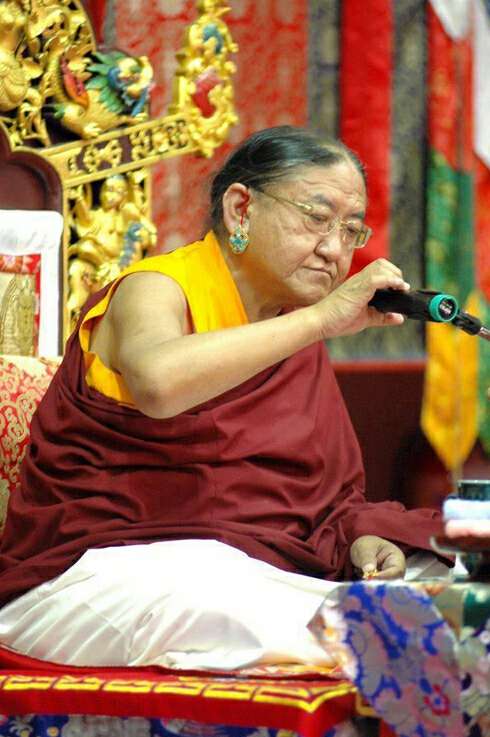Sakyapa

The Sakya tradition has its origins with the translator Drogmi, who transferred the lineage of the Indian master Virupa to Khon Konchog Gyalpo. On this occasion, Khon Konchog Gyalpo built the Sakya monastery (meaning grey earth) and founded the Sakya tradition. In 1247, the Mongolian prince Godan Khan conquered Tibet and gave temporal authority over Tibet to Abbot Kunga Gyaltsen (better known as Sakya Pandita), who was one of the earliest major figures in this lineage. In 1254 Mongol emperor Kublai Khan invited Chögyal Phagpa from this sect for teachings. Also Kublai Khan made Buddhism state religion in Mongolia and made Chogyal Phagpa the first religious and secular leader over Tibet. Sakya masters ruled Tibet more than 100 years, before the Gelug took over secular power with the Dalai Lamas.
A typical aspect of the Sakya tradition is called Lamdrey (leading to state of Hevajra), a concise presentation of the Buddhist philosophy. The Sakyas were much influenced by the Kadam lineage.
In 1354, the rule over Tibet was given to the monk Changchub Gyaltsen, who was not a Sakya practitioner and after this, the tradition of Sakya declined its importance in Tibet.
There are two most important figures of the Sakya lineage that recognize as head of the lineage by whole sect. They are Sakya Drolma Phudrang lives in Derahdun(North of India) and Sakya Phuntsok Phudrang in USA, Drolma Phudrang and Phuntsok Phudrang holds the power of Sakya lineage head alternatively by generations, since both of them are allowed to marry and their son success the throne. Currently Sakya Trichen Drolma Phudrang holds the importance.
